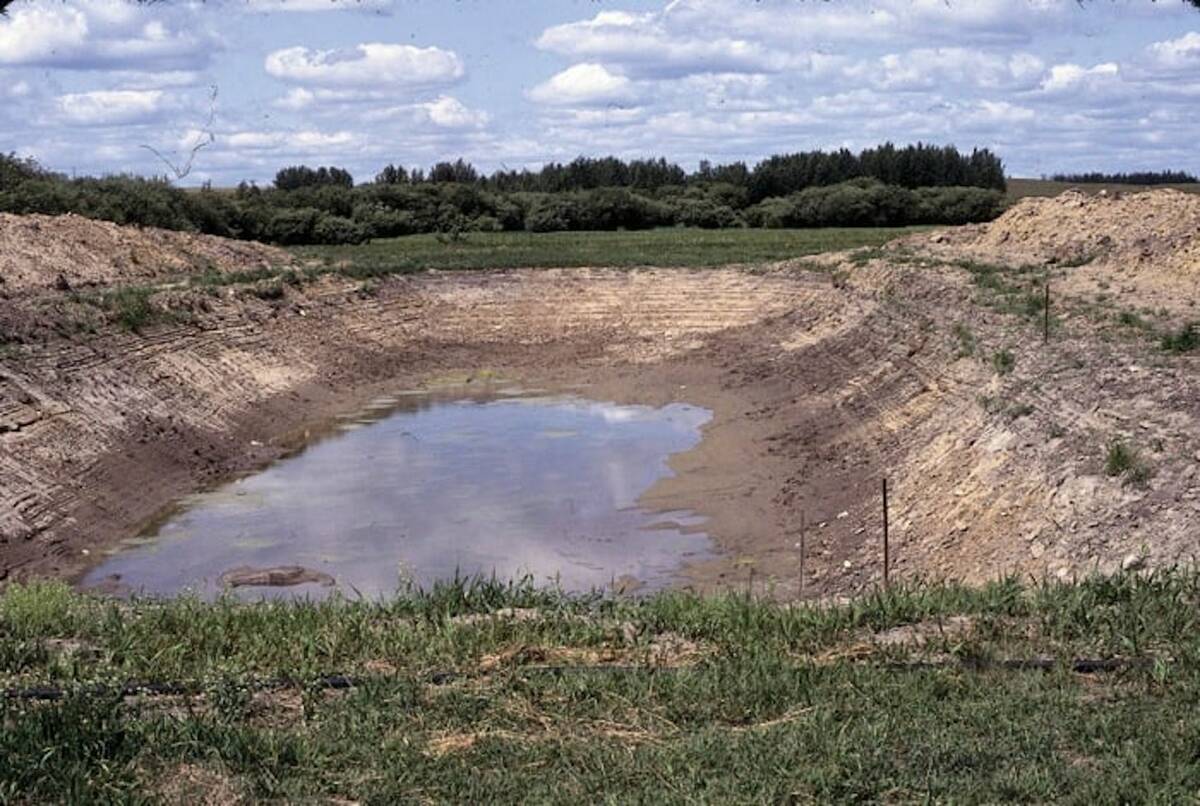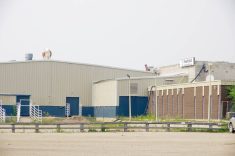Opening the border to Canadian cattle came not with a bang but a whimper.
In the three weeks between July 18, when movement started, and Aug. 5, only about 22,300 slaughter and feeder cattle landed on American soil, according to the United States Department of Agriculture animal health and plant inspection service.
That compares to an average of more than 12,000 fed cattle and 4,300 feeders shipped south each week in the five years before the border closed in 2003, according to Canfax statistics.
The current slow movement is not a bad thing, said one market analyst.
Read Also

Dry summer conditions can lead to poor water quality for livestock
Drought conditions in the Prairies has led to an decrease in water quality, and producers are being advised to closely monitor water quality for their animals.
Canadians need to approach the American border opening with caution, said Herb Locke of Edmonton.
“What do we want to stay married to the Americans for?” he said.
“We can’t go back. I’m worried that we are reverting and going back to our old bad habits of being reliant on the U.S.”
Locke is a proponent of building a bigger domestic processing industry for cattle of all classes.
“We need to get on with processing everything we grow live here in one form or another. I’m disappointed we have sent as many across the border as we have been.”
While better prices and more bidders from the American market may be enticing, Canada needs to reposition itself because other countries are waiting to push into the boxed beef business.
“Other countries have filled that market niche,” he said.
“Uruguay can deliver boxed boneless beef to the North American market cheaper than we can produce.”
The American market is in a period of seasonal adjustment when movement traditionally slows, but the cattle herd there is also in expansion mode with little interest in what Canada is doing.
Mike Miller of the American analysis firm Cattlefax said the return of Canadian cattle has had no impact on the U.S. market even though prices have dropped slightly.
“The challenge we are running into right now is more a time-of-the-year issue than it is really anything else,” he said.
A hot summer has slowed beef consumption and demand at a time of heavy imports from Canada, Uruguay, Australia and New Zealand.
Miller dismissed those who claimed reopening the border would have severe implications for American prices.
“The bottom line is the market had already adjusted for a lot of this prior to the reopening of the border to cattle crossing.”
Canada has increased its slaughter capacity and is likely to continue shipping more beef in a box than on the hoof.
“There’s going to be a slow and steady number that cross, but we don’t think it will be a lot,” Miller said.
However, American cow plants could use older Canadian cattle.
Swift & Co. permanently closed its beef processing plant in Nampa, Idaho, citing market conditions and the inability to secure enough cattle.
National Beef Packing Co., the fourth largest U.S. beef producer, said it is closing two plants in Kansas on Saturdays because of a surplus of meat.
Those kinds of announcements are sometimes part of a bigger strategy of packers, said Bryan Danard of Calgary Stockyards, which manages the TEAM electronic auction.
“The packers are saying there is little demand for beef right now, but … it is psychological to try and drive the fat market down,” he said.
Feeder cattle prices in Canada have improved since the border opened but most buyers have been Canadian, not American.
Danard expects no significiant American interest will develop until the first two weeks of September. Few feeders are moving now because there is plenty of good pasture across the Prairies.
“There’s no urgency for anyone to sell any cattle anytime soon,” he said.
While he has heard of no interest in forward contracting for later delivery, he anticipates a good autumn sales period after two dismal years.
“The cattle market in Canada is going to be very, very strong because we are going to have a cheap cost of gain,” he said.
Danard anticipates a large number of American buyers will buy Canadian feeder cattle, finish them in Canada to take advantage of the cheaper cost of gain and then export them for slaughter.
American competition does not worry southern Alberta feedlot owner Glen Thompson of Iron Springs.
He shipped cattle across the line on July 18 and said it was still profitable, although the cost of shipping increased 25 percent compared to the pre-BSE market.
With more inspections and verifications on individual animals, there is no such thing as a wide open border.
“The border is 25 percent open,” he said.

















